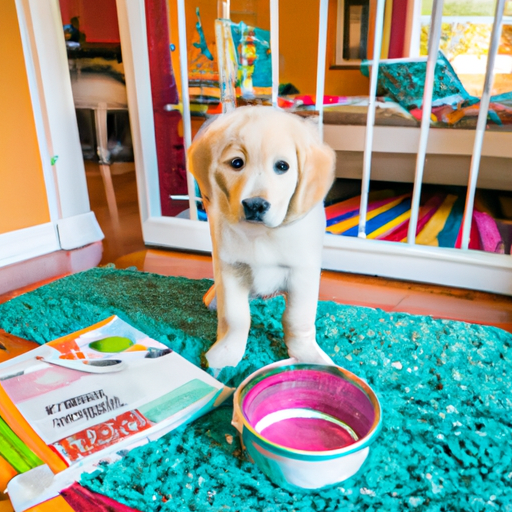Introduction
You’ve just brought home a new puppy and you’re excited to start this new journey together. As a caregiver, it’s your responsibility to provide a safe and comfortable environment for your new furry friend. One of the most important things you can do to set your puppy up for success is to kennel train them. This process can seem daunting, especially if you live in an apartment, but don’t worry. This guide will walk you through every step of the process.
1. Choose the Right Kennel
First things first, you’ll need to find the perfect kennel for your puppy. It should be a safe, comfortable space where your puppy will want to spend time.
Here are some key features to consider when choosing a kennel:
-
Size: The kennel should be large enough for your puppy to stand, turn around, and lie down comfortably. But it shouldn’t be so large your puppy could use one corner as a bathroom and the rest for sleeping.
-
Material: Kennels come in a variety of materials, including wire, plastic, and fabric. Wire kennels are usually the most durable and provide good ventilation.
-
Door: The door should be easy for you to open, but not for your puppy.
-
Floor: It should be easy to clean and leak-proof.
2. Introduce The Kennel
Once you have the perfect kennel, it’s time to introduce it to your puppy. You should make this as positive an experience as possible. Here’s what you can do:
-
Place the kennel in an area where you and your family spend a lot of time. This will help your puppy associate the kennel with being part of the family.
-
Leave the door open and encourage your puppy to explore the kennel on their own. You can do this by placing treats, toys, or a blanket inside the kennel.
-
Reward your puppy every time they go into the kennel. This will help them associate it with positive experiences.
3. Establish a Kennel Routine
Establishing a routine is crucial for successful kennel training. This will help your puppy understand when it’s time to be in the kennel and when it’s time to be out.
Here’s a sample routine you can start with:
-
Morning: Let your puppy out of the kennel, take them outside to potty, feed them, and play together.
-
Midday: Back in the kennel for a nap.
-
Afternoon: Let your puppy out again for more playtime and a potty break.
-
Evening: Feed your puppy, play together, and then it’s time for bed in the kennel.
Adjust this routine as necessary to fit your lifestyle and your puppy’s needs.
4. Deal With Separation Anxiety
It’s normal for puppies to experience separation anxiety, especially when they’re in a new environment. However, there are ways to help your puppy feel more comfortable when they’re alone in the kennel.
-
Gradual increase: Start by leaving your puppy in the kennel for short periods of time and gradually increase the duration.
-
Comforting items: Leave a piece of your clothing or a blanket that smells like you in the kennel.
-
Distractions: Give your puppy a toy or a treat to keep them occupied.
-
Avoid making a fuss: When you leave or come home, avoid making a big fuss. This can cause your puppy to associate your departure or arrival with stress.
5. Troubleshooting Common Problems
Despite your best efforts, your puppy might still struggle with kennel training. Here are solutions to some common problems:
-
Whining: If your puppy whines in the kennel, wait until they stop before you let them out. This teaches them that whining won’t get them what they want.
-
Accidents in the kennel: If your puppy has accidents in the kennel, make sure you’re providing enough potty breaks. Also, clean the kennel thoroughly to remove any odor that might encourage your puppy to go again.
-
Chewing on the kennel: If your puppy chews on the kennel, provide chew toys to keep them occupied.
FAQs
Q: How long should I leave my puppy in the kennel?
A: The general rule of thumb is one hour for each month of age, up to a maximum of 5 hours.
Q: My puppy hates the kennel. What can I do?
A: Make sure the kennel is comfortable, introduce it gradually, and associate it with positive experiences. If your puppy still struggles, consider consulting with a professional dog trainer.
Q: Can I use the kennel as a punishment?
A: No. The kennel should be a safe, positive space for your puppy. Using it as a form of punishment can create negative associations, making kennel training more difficult.
Q: What if my puppy has an accident in the kennel?
A: Clean it thoroughly and adjust your routine to provide more potty breaks. If accidents continue, consider consulting with a vet to rule out any medical issues.
Kennel training your puppy in an apartment may seem challenging, but with patience, consistency, and a lot of love, your puppy will soon see their kennel as a safe, comfortable space.



